Syed A. Hamza
Continuous Human Activity Recognition using a MIMO Radar for Transitional Motion Analysis
Apr 12, 2023Abstract:The prompt and accurate recognition of Continuous Human Activity (CHAR) is critical in identifying and responding to health events, particularly fall risk assessment. In this paper, we examine a multi-antenna radar system that can process radar data returns for multiple individuals in an indoor setting, enabling CHAR for multiple subjects. This requires combining spatial and temporal signal processing techniques through micro-Doppler (MD) analysis and high-resolution receive beamforming. We employ delay and sum beamforming to capture MD signatures at three different directions of observation. As MD images may contain multiple activities, we segment the three MD signatures using an STA/LTA algorithm. MD segmentation ensures that each MD segment represents a single human motion activity. Finally, the segmented MD image is resized and processed through a convolutional neural network (CNN) to classify motion against each MD segment.
Sparse Array Capon Beamformer Design Availing Deep Learning
Aug 20, 2021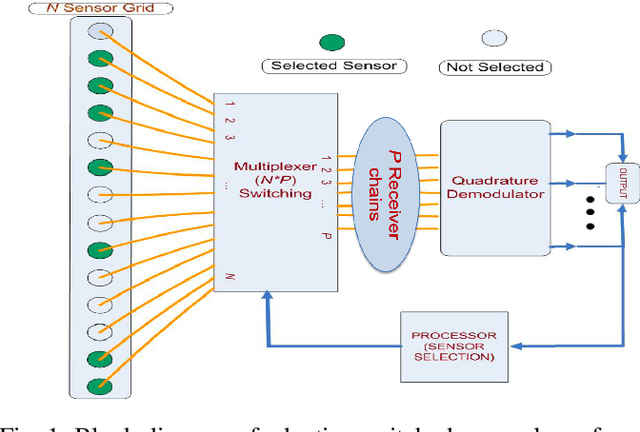

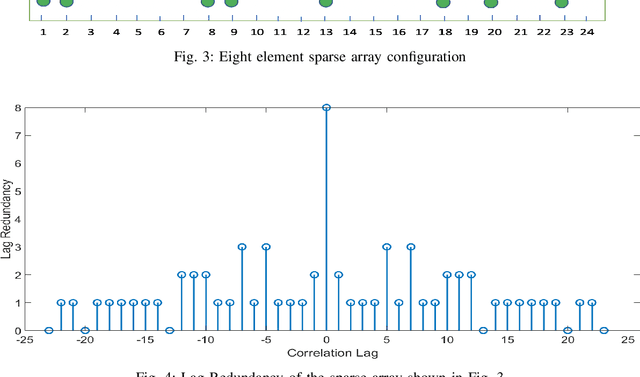
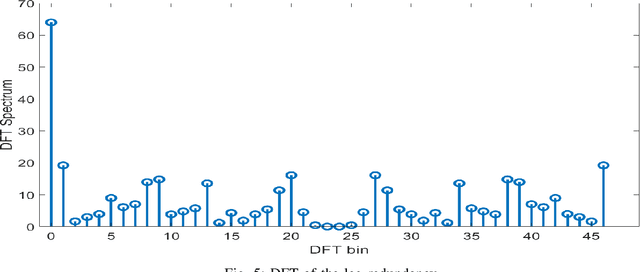
Abstract:The paper considers sparse array design for receive beamforming achieving maximum signal-to-interference plus noise ratio (MaxSINR). We develop a design approach based on supervised neural network where class labels are generated using an efficient sparse beamformer spectral analysis (SBSA) approach. SBSA uses explicit information of the unknown narrowband interference environment for training the network and bears close performance to training using enumerations, i.e., exhaustive search which is computationally prohibitive for large arrays. The employed DNN effectively approximates the unknown mapping from the input received data spatial correlations to the output of sparse configuration with effective interference mitigation capability. The problem is posed as a multi-label classification problem where the selected antenna locations achieving MaxSINR are indicated by the output layer of DNN. In addition to evaluating the performance of the DNN in terms of the classification accuracy, we evaluate the performance in terms of the the ability of the classified sparse array to mitigate interference and maximize signal power. It is shown that even in the case of miss-classification, where at least one sensor location doesn't match the optimal locations, the DNN effectively learns the sub-optimal sparse configuration which has desirable SINR characteristics. This shows the ability of the DNN to learn the proposed optimization algorithms, hence paving the way for efficient real-time implementation.
Radar Human Motion Classification Using Multi-Antenna System
Apr 01, 2021


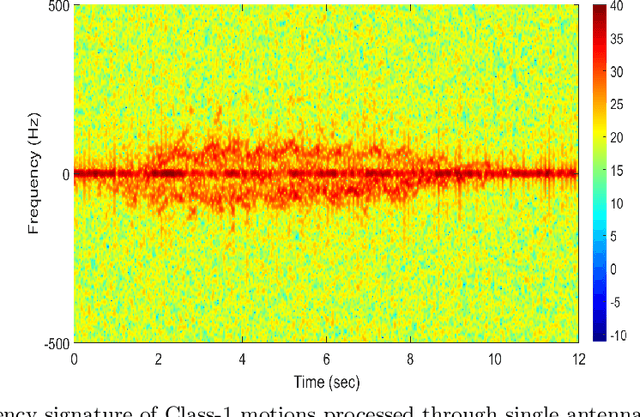
Abstract:This paper considers human activity classification for an indoor radar system. Human motions generate nonstationary radar returns which represent Doppler and micro-Doppler signals. The time-frequency (TF) analysis of micro-Doppler signals can discern subtle variations on the motion by precisely revealing velocity components of various moving body parts. We consider radar for activity monitoring using TF-based machine learning approach exploiting both temporal and spatial degrees of freedom. The proposed approach captures different human motion representations more vividly in joint-variable data domains achieved through beamforming at the receiver. The radar data is collected using real time measurements at 77 GHz using four receive antennas, and subsequently micro-Doppler signatures are analyzed through machine learning algorithm for classifications of human walking motions. We present the performance of the proposed multi antenna approach in separating and classifying two closely walking persons moving in opposite directions.
Cognitive-Driven Optimization of Sparse Array Transceiver for MIMO Radar Beamforming
Mar 04, 2021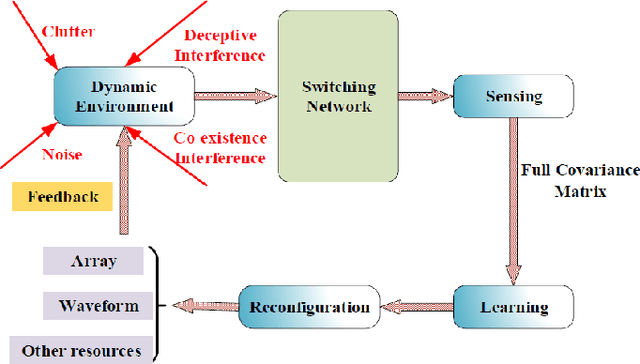


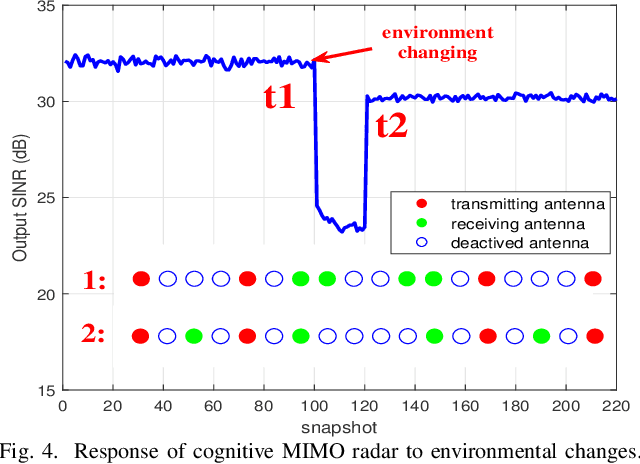
Abstract:Cognitive multiple-input multiple-output (MIMO) radar is capable of adjusting system parameters adaptively by sensing and learning in complex dynamic environment. Beamforming performance of MIMO radar is guided by both beamforming weight coefficients and the transceiver configuration. We propose a cognitive-driven MIMO array design where both the beamforming weights and the transceiver configuration are adaptively and concurrently optimized under different environmental conditions. The perception-action cycle involves data collection of full virtual array, covariance reconstruction and joint design of the transmit and receive arrays by antenna selection.The optimal transceiver array design is realized by promoting two-dimensional group sparsity via iteratively minimizing reweighted mixed L21-norm, with constraints imposed on transceiver antenna spacing for proper transmit/receive isolation. Simulations are provided to demonstrate the "perception-action" capability of the proposed cognitive sparse MIMO array in achieving enhanced beamforming and anti-jamming in dynamic target and interference environment.
Sparse Array Transceiver Design for Enhanced Adaptive Beamforming in MIMO Radar
Feb 20, 2021
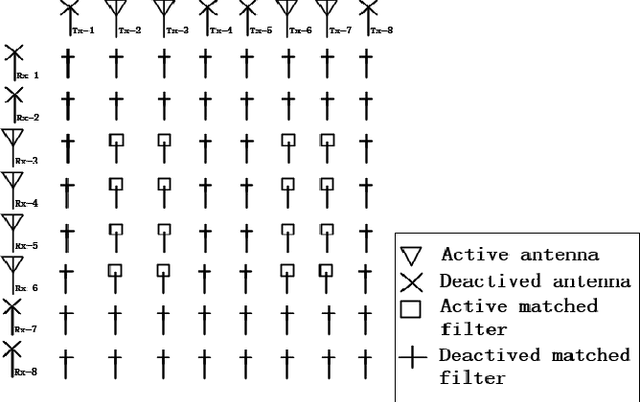

Abstract:Sparse array design aided by emerging fast sensor switching technologies can lower the overall system overhead by reducing the number of expensive transceiver chains. In this paper, we examine the active sparse array design enabling the maximum signal to interference plus noise ratio (MaxSINR) beamforming at the MIMO radar receiver. The proposed approach entails an entwined design, i.e., jointly selecting the optimum transmit and receive sensor locations for accomplishing MaxSINR receive beamforming. Specifically, we consider a co-located multiple-input multiple-output (MIMO) radar platform with orthogonal transmitted waveforms, and examine antenna selections at the transmit and receive arrays. The optimum active sparse array transceiver design problem is formulated as successive convex approximation (SCA) alongside the two-dimensional group sparsity promoting regularization. Several examples are provided to demonstrate the effectiveness of the proposed approach in utilizing the given transmit/receive array aperture and degrees of freedom for achieving MaxSINR beamforming.
 Add to Chrome
Add to Chrome Add to Firefox
Add to Firefox Add to Edge
Add to Edge